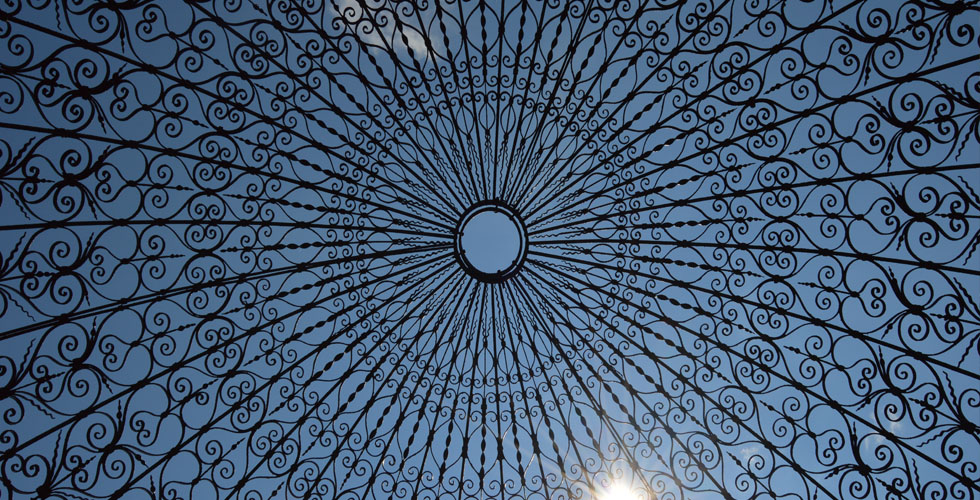
A Closer Look: History of Elkins Park Campus
The number one rule in real estate is: location, location, location – meaning properties can fluctuate in value due to nothing other than location. In a way, it is also this rule that may play a role in the continued success of Salus University’s Pennsylvania College of Optometry (PCO) for the past 100 years – and the University as a whole, which celebrated its tenth anniversary this past year.
With a fascinating history, one of PCO’s greatest achievements is the acquisition of the Elkins Park campus which allowed the College, and later the University, to expand over the past 20 years.
It all began on November 5, 1683, when John Russell purchased the 300 acres southeast of Washington Lane, later known as the Russell Tract, spanning across what is known today as Penrose Avenue and Serpentine Lane. After his death in 1698, Russell’s daughter and her husband Joseph Mather went on to inherit the property and it continued to pass down in the Mather family for the next six generations. During this time, the property became split up into smaller estates as it was divided amongst the family members. In 1769, Isaac Mather inherited more than 50 acres of land in the northern most portion of Russell Tract. His property was rumored to be used during the Revolutionary War by the Continental Army as a look-out post in the late 1770s.
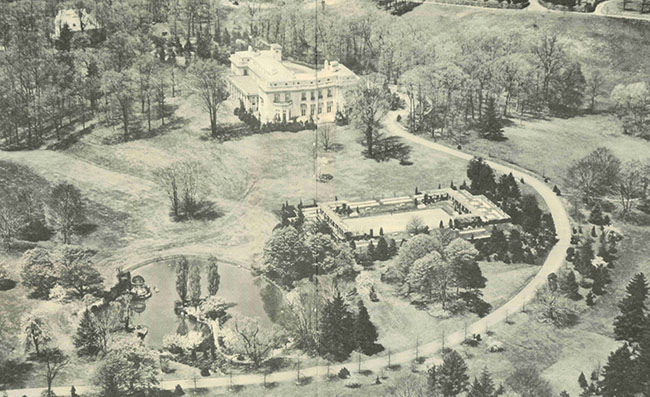
Lindenhurst
Almost a century later, in 1868, John Wanamaker, a well-known Philadelphia merchant, religious, civic and political figure, purchased 50 acres of Mather’s property. Wanamaker went on to name the property Lindenhurst, because of all the Linden trees that naturally grew there. Wanting to create a one-of-a-kind landscape, Wanamaker also brought flowers, trees, and shrubs from all over the world onto the property and later erected his estate, known as the Magnificent Mansion on the property. In 1889, the 23rd president of the U.S., Benjamin Harrison, and his wife were guests on the Lindenhurst property and made several visits. Wanamaker continued to develop the Lindenhurst property, adding the now iconic manmade lake, bridge, and gazebo – all of which still exists today on the campus. His own private railroad station on the Reading Railroad, Chelten Hills, provided a direct transportation link between his city home and the summer residence at Lindenhurst.
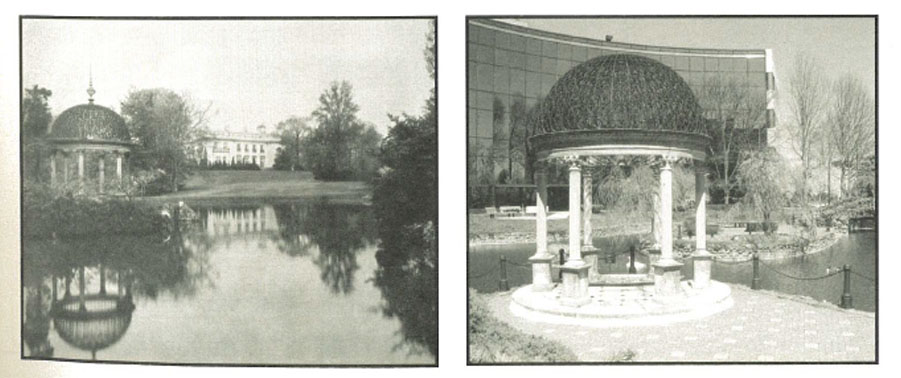
In 1915, Henry W. Breyer, Jr. (heir to Breyers® Ice Cream Company) and his family built on the property adjacent to Wanamaker’s. Breyer and his family decided to purchase Wanamaker’s estate from Rodman Wanamaker on January 10, 1929, entitling them to over 80 acres of additional real estate.
In 1943, Henry Breyer and his family decided they no longer wanted the land and decided to donate it to the Philadelphia Council Boy Scouts of America.
The Breyer family helped the Philadelphia Council Boy Scouts of America become the sole owners of the property in 1944. Under the land’s new ownership, the site was quickly transformed into the Breyer Training Area, a place where Boy Scouts could train and have fun. After all of the zoning and tax issues were dealt with and demolition was completed, the area was officially named the Henry W. Breyer Scout Training Area. All the while, the Breyer family continued to donate to the Scouts. They also helped the Council with upkeep of the property. It was the Breyer family’s gifts and donations that led to the construction of buildings, roads and other facilities on the property.
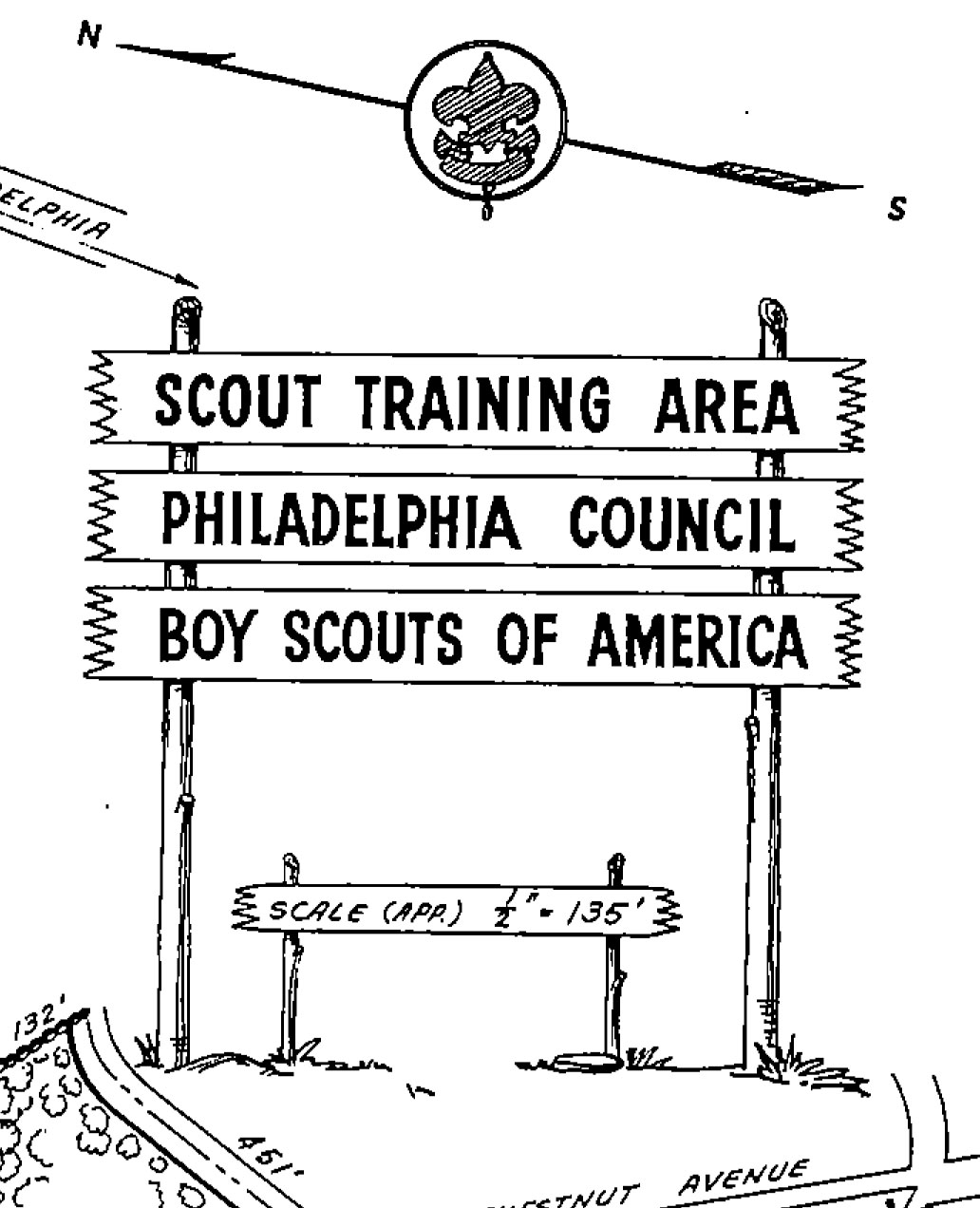 With the building of the Oak Lane Lodge on the property, the Philadelphia Council Boy Scouts of America finally had an outdoor facility where they could train scouts and scouters on nature and life skills. Wannamaker would be proud that the abundant flora of the land continued to be one of its greatest attributes. And, the property became recognized as a stop for public transportation, Southeastern Pennsylvania Transportation Authority (SEPTA).
With the building of the Oak Lane Lodge on the property, the Philadelphia Council Boy Scouts of America finally had an outdoor facility where they could train scouts and scouters on nature and life skills. Wannamaker would be proud that the abundant flora of the land continued to be one of its greatest attributes. And, the property became recognized as a stop for public transportation, Southeastern Pennsylvania Transportation Authority (SEPTA).
The Philadelphia Boy Scouts began to decrease in membership in the late 1960s, and in 1969, the Philadelphia Council sold a majority of the land to a group of coal businesses owners. Eight acres remained in ownership of a conglomeration of the Philadelphia Boy Scouts and Valley Forge Boy Scouts, who merged to form the Cradle of Liberty Council. Boy Scouts from the original 13 colonies gathered on the property during the 1976 Bicentennial.
After purchasing the land from the Boy Scouts, the new owners originally wanted to build a shopping mall, but due to protests from the neighbors, they were unable to execute their construction plans. Instead, condos and office buildings were constructed.
In 1995, PCO set its sights on the 21st century and completed a College-wide functional space analysis. Critical space limitations were identified at the Oak Lane campus, including classroom and lab capacity, the library and parking. It was at this point a postcard listing of the Breyer Office Park Complex for sale landed on the desk of then PCO president Thomas Lewis, OD ’70. According to Dr. Lewis, he hopped in the car, took a ride three miles north of the Oak Lane campus to the property, and knew this was the place to expand PCO.
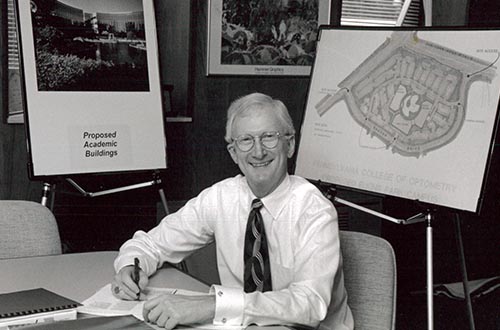 The new campus was purchased with a $13.5 million loan and $3.5 million from PCO. The bank required PCO to raise an additional $1 million before it released $3 million to be used for renovations. PCO alumni answered the call and within a year, the $1 million was raised. At that time, administration decided to use only the two adjoining buildings for the campus while leasing the third building – Breyer Office Park.
The new campus was purchased with a $13.5 million loan and $3.5 million from PCO. The bank required PCO to raise an additional $1 million before it released $3 million to be used for renovations. PCO alumni answered the call and within a year, the $1 million was raised. At that time, administration decided to use only the two adjoining buildings for the campus while leasing the third building – Breyer Office Park.
On June 4, 1997 renovations for the Elkins Park campus officially began. Move-in day for the new Elkins Park campus was July 1, 1998.
With the assistance of State Representative (now U.S. representative) Dwight Evans, PCO was able to sell the previous academic and administrative buildings, located in Oak Lane, to the Community College of Philadelphia.
With the expansion of the campus also came the expansion of colleges and programs. No longer a single-purpose institution, with the approval of the Pennsylvania Department of Education, PCO established Salus University in July 2008. Today, the University is made up of four colleges – the Pennsylvania College of Optometry (PCO); the College of Education and Rehabilitation (CER); the Osborne College of Audiology (OCA); and the College of Health Sciences.
As part of the University’s five-year strategic plan to improve campus-wide space utilization to maximize the University’s ability to successfully educate students, renovations continue to be made within the buildings on the Elkins Park campus.